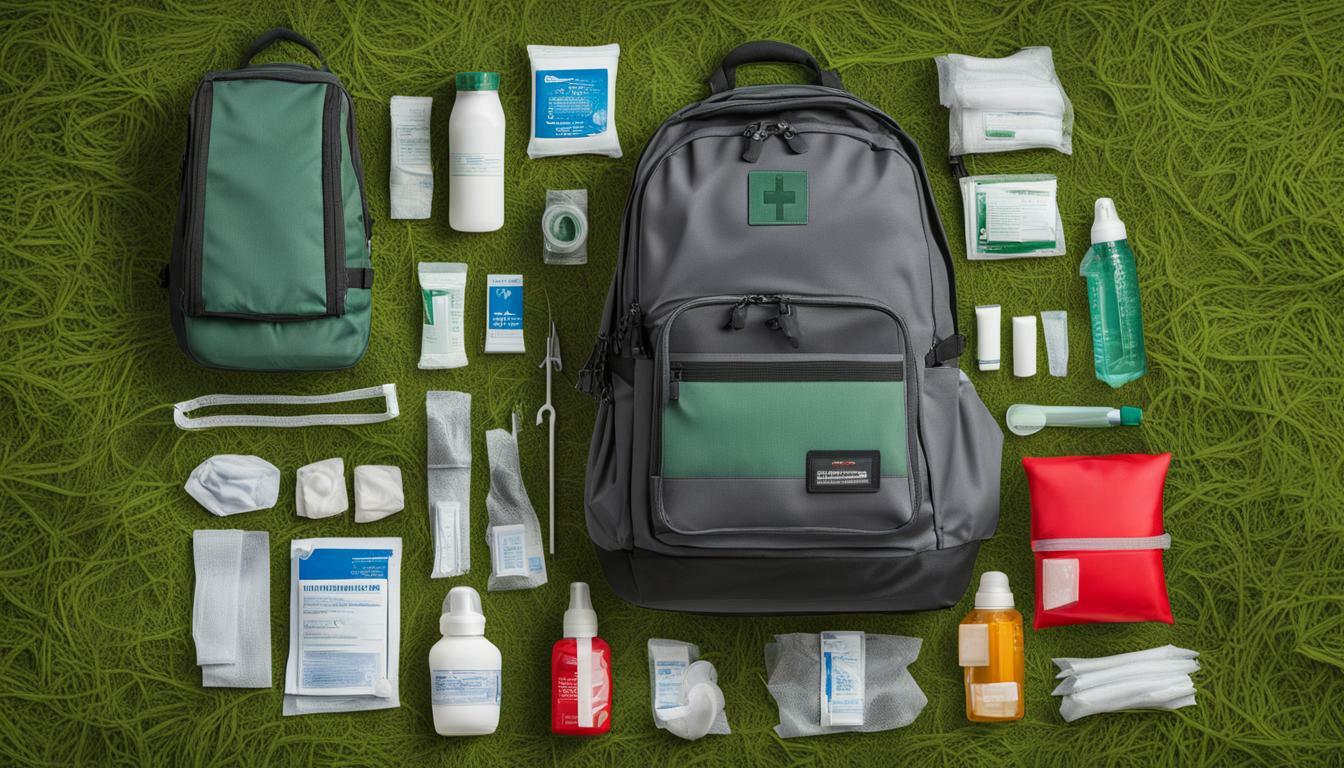When conducting fieldwork in remote locations, environmental scientists must be prepared for any health-related scenarios that may arise. From injuries to illnesses, the harsh environments of the outdoors pose unique challenges that require specialized attention. One of the most important components of fieldwork health is having the appropriate first aid kit on hand, tailored to the specific needs of the scientists and their location.
First aid kits for remote environmental scientists should contain essential supplies for addressing common health concerns, such as wound dressings, insect repellents, and emergency medication. With the right first aid kit, scientists can stay safe and healthy while conducting valuable research in remote environments.
Key Takeaways:
- Fieldwork health is crucial for remote environmental scientists.
- Having the appropriate first aid kit on hand is essential for staying safe and prepared in harsh outdoor environments.
The Importance of First Aid Kits in Remote Fieldwork
Environmental scientists who work in remote locations face unique challenges when it comes to their health and safety. Whether they are conducting research in the wilderness, studying marine life in the middle of the ocean, or exploring underground cave systems, they need to be prepared for a wide range of potential hazards and emergencies. This is where having a first aid kit specifically designed for fieldwork comes in.
Remote fieldwork first aid kits are essential for environmental scientist health supplies. These kits contain specialized supplies to cater to the health needs of scientists working in harsh environments. They are specifically designed to address the challenges faced by scientists in remote locations, where access to medical facilities may be limited or non-existent.
The Unique Challenges of Remote Fieldwork
Remote fieldwork presents a host of unique challenges that require special consideration when it comes to first aid kits. One of the biggest challenges is the limited access to medical facilities. Many remote locations are far from hospitals or clinics, which means that environmental scientists may need to rely on their first aid kits to address injuries or illnesses.
In addition to the limited access to medical facilities, environmental scientists must also contend with harsh weather conditions, unpredictable terrain, and potentially dangerous wildlife. These factors increase the risk of accidents and injuries, making first aid kits an essential part of any fieldwork health kit.
The Role of Remote Fieldwork First Aid Kits
Remote fieldwork first aid kits are specifically designed to address the unique challenges faced by environmental scientists in remote locations. They contain essential health supplies for scientists in remote locations, including wound dressings, insect repellents, emergency medication, and other items that address common health concerns in harsh environments.
These kits provide scientists with the tools they need to address injuries and illnesses quickly and effectively. By having the right supplies readily available, scientists can minimize the risk of complications and ensure that they are able to continue their work safely and effectively.
Conclusion
Remote fieldwork first aid kits are essential for environmental scientists working in harsh and remote environments. By providing specialized supplies that cater to the unique health needs of scientists in these locations, these kits help ensure that scientists can continue their work safely and effectively, even in challenging conditions. With the right first aid kit, environmental scientists can stay prepared and stay safe while exploring some of the most remote and fascinating parts of our planet.

Key Features of First Aid Kits for Fieldwork
When working in remote locations as an environmental scientist, having a first aid kit that caters to the specific health needs of fieldwork is essential. These kits should contain essential health supplies and equipment necessary for addressing common health concerns in remote environments.
Here are some key features that make first aid kits suitable for fieldwork:
| Item | Description |
|---|---|
| Wound dressings | Fieldwork first aid kits should include a variety of wound dressings to address different types and sizes of injuries. These can include adhesive bandages, sterile gauze pads, and self-adherent wrap. |
| Insect repellents | Insect-borne diseases can be a serious risk in remote locations, so it’s important to include a good quality insect repellent in the kit. Look for products that contain DEET or picaridin for effective protection. |
| Emergency medication | Depending on the location and potential health risks, it may be necessary to include emergency medication in the kit. This can include antihistamines, painkillers, and medication for treating altitude sickness. |
| Personal protective equipment | Personal protective equipment (PPE) such as gloves, eye protection, and face masks are essential for protecting against potential hazards in the field. These should be included in the kit to ensure the safety of all scientists involved in the fieldwork. |
| Clean water and hydration supplies | Staying hydrated is crucial in remote environments. Including hydration supplies such as water purification tablets or a filtration system can ensure that scientists have access to clean water sources during fieldwork. |
These are just a few examples of the essential items that should be included in first aid kits for fieldwork. It’s important to tailor the kit to the specific location and potential hazards to ensure that all necessary supplies are included.
Ensuring Safety in Harsh Environments
Remote environmental scientists face unique challenges and risks in their line of work. Being prepared for extreme weather conditions, wildlife encounters, and potential injuries or illnesses that can arise during fieldwork is crucial to their safety and well-being. The UK’s harshest environments require careful planning and specialized equipment to ensure that scientists can focus on their research without compromising their health.
| Challenges | Risks |
|---|---|
| Extreme temperatures | Frostbite, heatstroke, hypothermia |
| High altitude | Altitude sickness |
| Unpredictable weather | Lightning strikes, flash floods, avalanches |
| Wildlife encounters | Bites, stings, attacks |
| Difficult terrain | Falls, sprains, fractures |
| Isolation | Limited medical services, communication difficulties |
To ensure safety in these harsh environments, remote environmental scientists need to have access to appropriate first aid equipment. This includes field health kits that are specifically designed to cater to the health needs of scientists in remote locations. These kits should contain essential health supplies such as wound dressings, insect repellents, emergency medication, and other items required to address common health concerns in extreme environments.
Scientists must also be adequately trained in basic first aid techniques, so they can respond quickly and effectively in emergency situations. Failure to prepare adequately can result in severe health consequences that can be easily avoided with a well-stocked and appropriately equipped first aid kit.

Overall, ensuring safety in harsh environments requires a concerted effort from the scientists themselves, the organizations they work for, and the equipment suppliers. By prioritizing fieldwork health and safety and working together to provide the necessary resources, we can ensure that environmental scientists can continue to make significant contributions to our understanding of the natural world.
Selecting the Right First Aid Kit for Fieldwork
Choosing the right first aid kit for fieldwork is crucial to ensure the safety and well-being of remote environmental scientists. There are several factors to consider when selecting a kit that is suitable for the specific needs of an expedition.
One of the key considerations is the duration of the fieldwork. Longer expeditions may require larger first aid kits with additional supplies such as wound irrigation solutions, thermometers, and splints.
The number of scientists involved is also an important factor. If there are several team members, it may be necessary to have multiple first aid kits to ensure that everyone has access to necessary supplies in case of an emergency.
The location of the fieldwork and the potential risks and health concerns should also be taken into account. For example, if the expedition involves areas with high mosquito populations, it may be necessary to have insect repellent and mosquito nets as part of the first aid kit.
It is important to choose a kit that includes essential health supplies for scientists in remote locations. A field health kit should include wound dressings, bandages, antiseptic ointments, painkillers, and other key supplies.
When searching for a first aid kit, look for kits specifically designed for fieldwork and remote environments. These kits typically include a variety of supplies that are essential for addressing common injuries and illnesses in harsh conditions.

Don’t forget to regularly check and restock the kit as needed. Keeping the first aid kit up to date and fully stocked is crucial to ensure that all necessary supplies are available in case of an emergency.
Conclusion
Choosing the right first aid kit for fieldwork is essential for the safety and well-being of remote environmental scientists. By considering factors such as the duration of fieldwork, the number of team members, and the specific risks and health concerns of the location, scientists can select a kit that is tailored to their needs. With the right kit and regular maintenance, scientists can be prepared for any potential health issues that may arise during their valuable work.
First Aid Training for Scientists in Remote Locations
While having the appropriate first aid kit is crucial for fieldwork health, it is equally important for scientists to have the proper training in using them effectively. Basic first aid training can make a significant difference in the response time to health concerns during fieldwork and can ultimately contribute to better overall safety.
First aid training covers a wide range of topics, including wound care, CPR, and emergency response. This training can be tailored to address the specific needs of scientists working in remote locations, emphasizing the unique challenges and risks that they may encounter.
Scientists and researchers can seek out first aid training from a variety of sources, including health and safety organizations, universities, and government agencies. It is also essential to keep up with regular training and refresher courses to ensure that skills and knowledge remain up to date.
Having trained personnel on a fieldwork team is particularly important in serious emergency situations, such as severe injuries or illnesses. Trained individuals can help identify and address health concerns quickly and effectively, potentially preventing further complications or harm.
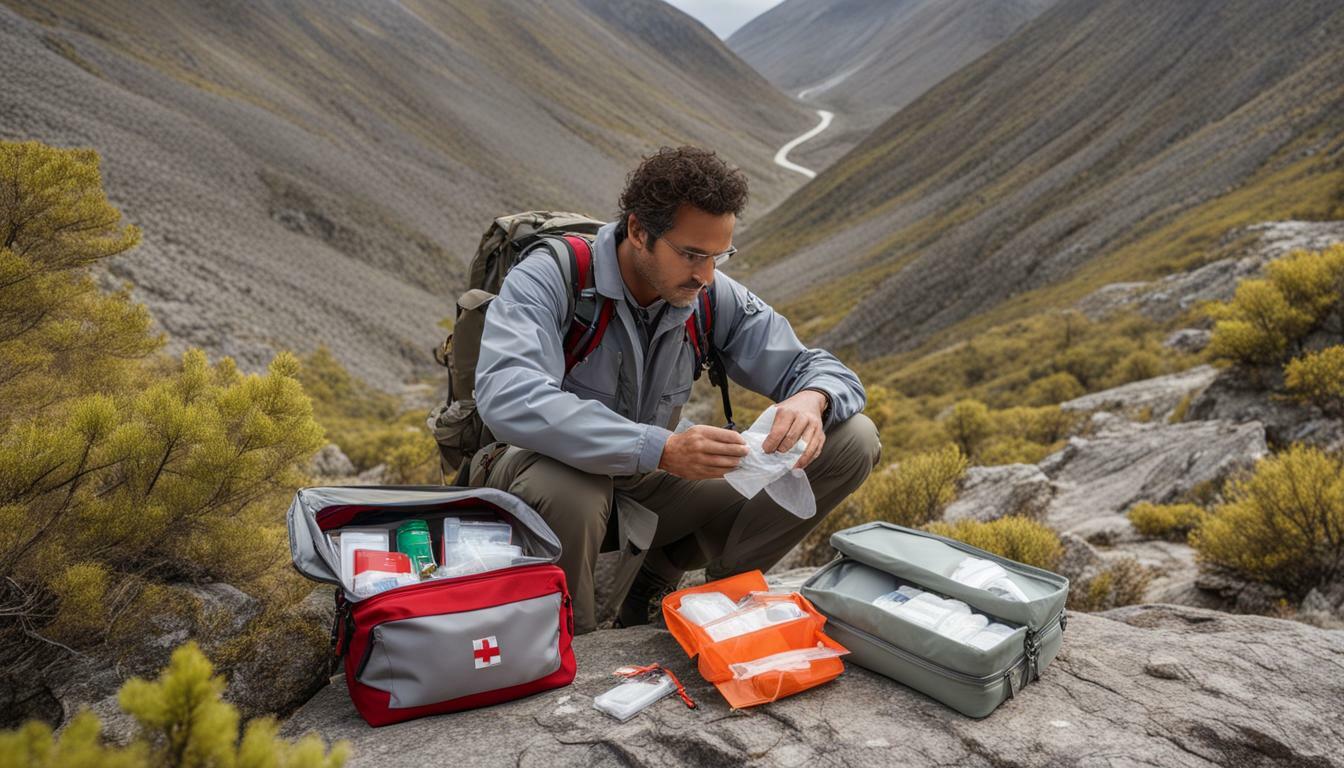
Overall, first aid training is a valuable investment for scientists working in remote locations. It can enhance overall safety and contribute to better health outcomes for fieldwork teams. By prioritizing both proper first aid kits and adequate training, environmental scientists can minimize the risks and challenges of fieldwork and focus on their important research and conservation efforts.
Maintaining and Restocking First Aid Kits
Proper maintenance and restocking of first aid kits are crucial to ensuring their effectiveness during fieldwork. It’s essential to keep the kits well-stocked and up to date to cater to the specific needs of environmental scientists working in remote locations.
Regular checks should be conducted to ensure that the items are accessible, in good condition, and have not expired. It’s recommended to replenish the supplies after each fieldwork or at least every six months to ensure that the first aid kit remains fully functional and ready for use.
The contents of the kit should include essential health supplies for scientists in remote locations, including wound dressings, insect repellents, emergency medication, and other items necessary for addressing common health concerns in harsh environments. It’s also important to consider the specific risks and health concerns in the chosen location while selecting the first aid equipment for fieldwork.
It’s advisable to keep the first aid kits in a dry and secure location, preferably in a waterproof container to prevent moisture from damaging the contents. Additionally, keeping track of inventory and recording the usage of supplies can help with efficient restocking and ensuring that the kit is always well-prepared.
| Essential Health Supplies | Quantity |
|---|---|
| Wound dressings | 10 |
| Sterile gauze | 10 |
| Adhesive tape | 1 roll |
| Scissors | 1 pair |
| Waterproof plaster | 10 |
| Antiseptic wipes | 10 |
| Insect repellent | 1 can |
| Antihistamines | 10 |
| Painkillers | 20 |
Regular maintenance and restocking of field health kits can help ensure that environmental scientists are well-equipped to handle health concerns in remote locations. By following these guidelines, scientists can ensure that the first aid kits are well-prepared, readily accessible, and fully functional.
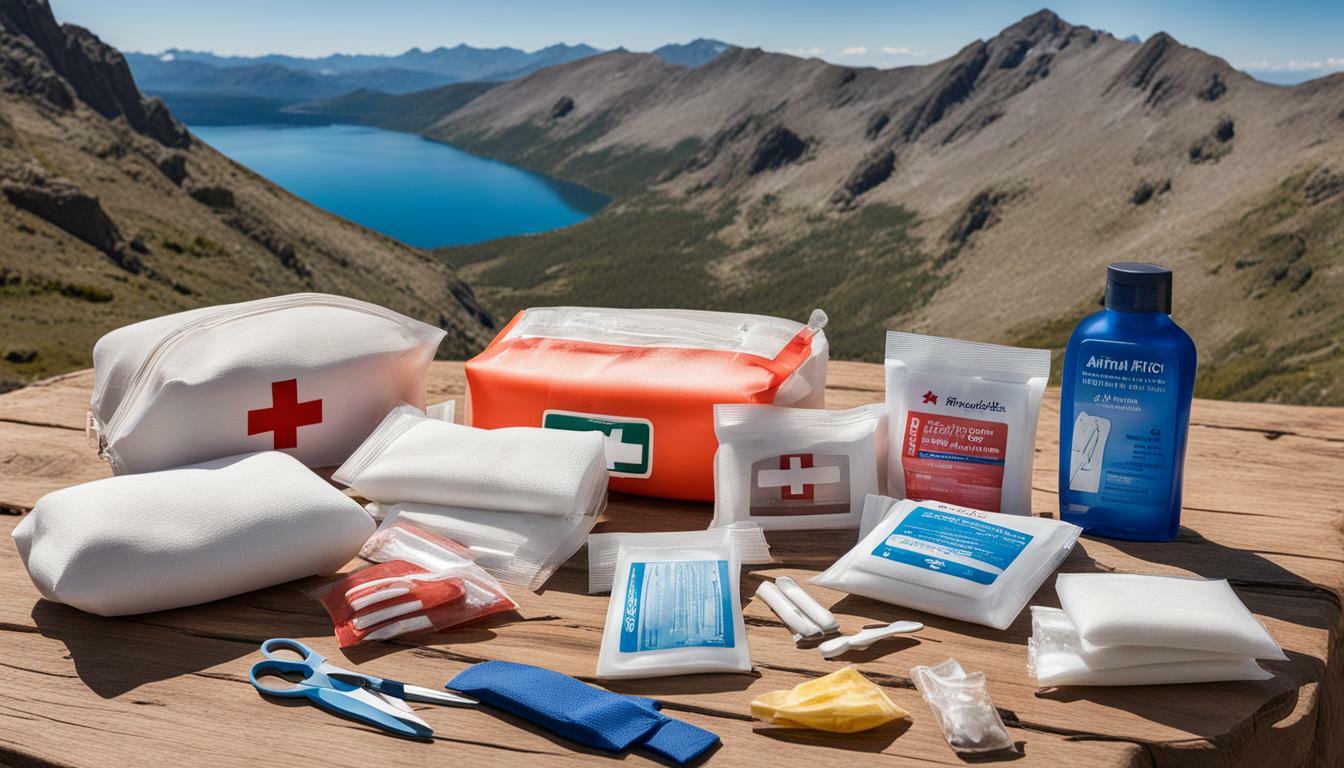
Case Studies: Real-Life Examples of First Aid Kits in Action
When conducting fieldwork in remote locations, unexpected emergencies can occur at any time. As such, having the appropriate first aid kit readily available is vital in ensuring the well-being of environmental scientists. Here are some real-life examples where first aid kits made a significant difference:
Case Study 1: Snakebite in the Amazon Rainforest
During a research expedition in the Amazon rainforest, a scientist was bitten by a venomous snake. Thanks to the quick response of their team, who had a well-stocked first aid kit, they were able to administer the appropriate antivenom and rush the scientist to a hospital for further treatment. The scientist made a full recovery, and the incident highlighted the importance of being prepared for wildlife encounters in remote locations.
Case Study 2: Severe Dehydration in the Sahara Desert
While studying the effects of climate change in the Sahara desert, a scientist suffered from severe dehydration. The team promptly administered oral rehydration salts and used an emergency water filter in their well-equipped first aid kit. Thanks to their preparedness, the scientist was able to make a full recovery and continue their research.
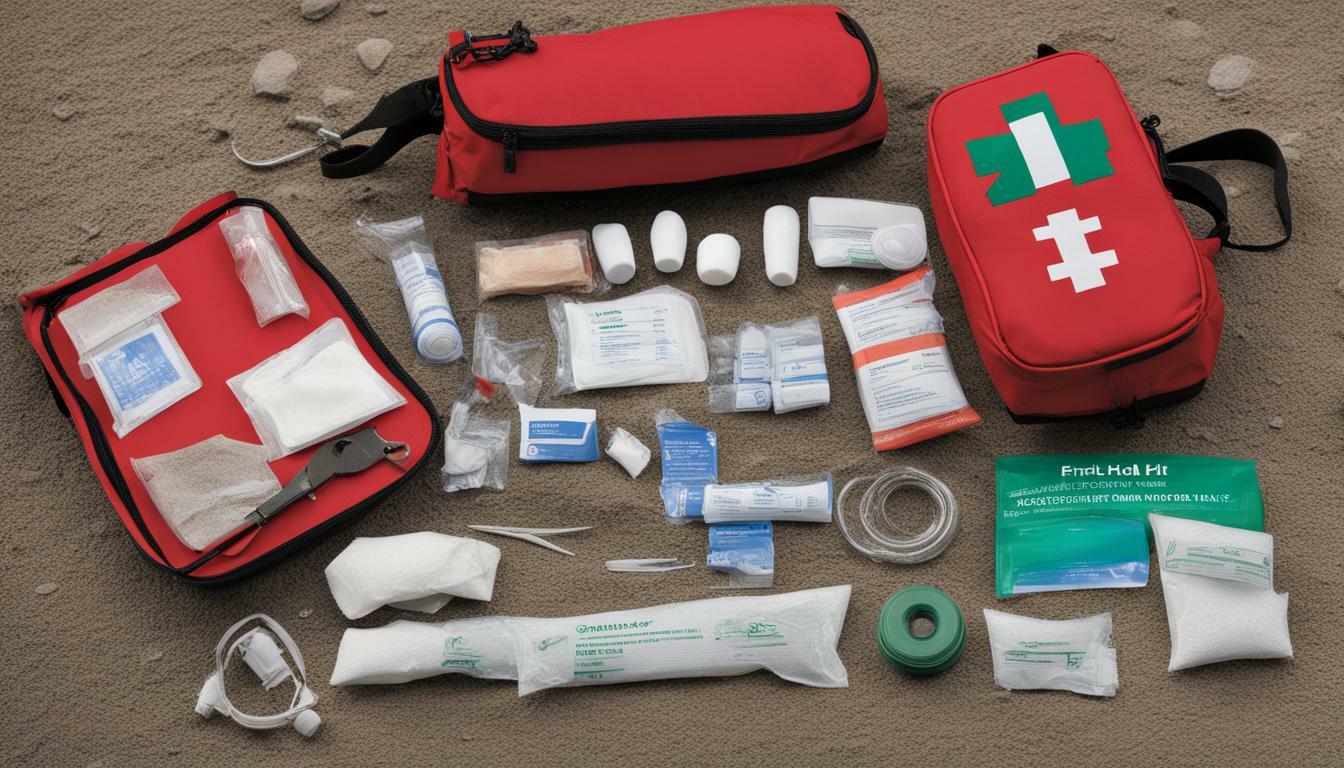
These cases demonstrate how having the right first aid kit and supplies can be crucial in emergency situations during remote fieldwork. It is essential to ensure that first aid kits are tailored to the specific health needs and risks of the chosen location. By doing so, environmental scientists can focus on their valuable work, knowing they are prepared for any health and safety challenges that may arise.
Recommendations from Experienced Environmental Scientists
When it comes to prioritising fieldwork health and safety, having the appropriate first aid kits for remote environmental scientists is crucial. But what does that entail? According to experienced environmental scientists, there are a few key things to keep in mind:
- Choose the right kit for the job: Depending on the specific location and type of fieldwork, different first aid kits may be necessary. It’s important to carefully consider the risks and requirements of your work and select a kit that meets those needs.
- Don’t forget about medication: In addition to typical first aid supplies, scientists working in remote locations may also require prescription medication or other specialized health supplies. It’s important to make sure you have everything you need to stay healthy and manage any ongoing health conditions.
- Be prepared for the unexpected: Remote fieldwork can be unpredictable, so it’s important to have a well-stocked first aid kit with a variety of supplies to address unexpected injuries, illnesses, and other health concerns.
- Don’t skimp on quality: A cheap, poorly made first aid kit may not hold up to the rigours of fieldwork. It’s important to invest in a high-quality kit that will last and provide effective treatment when needed.
By keeping these recommendations in mind and staying prepared with the right environmental scientist health supplies, scientists can stay focused on their valuable work while minimizing the risks of injury, illness, or other health concerns.
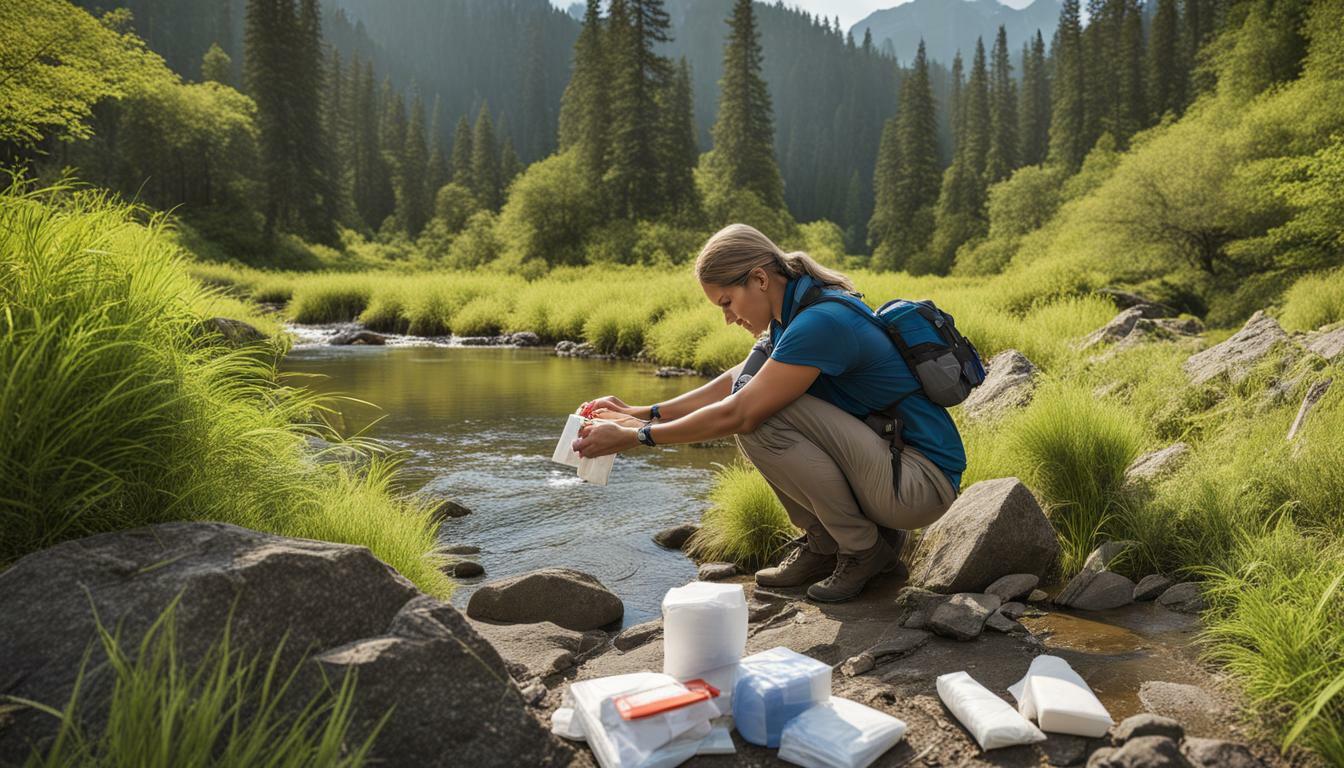
Resources for Fieldwork Health and Safety
When undertaking fieldwork in remote locations, it’s essential to have the right health supplies on hand to ensure safety and well-being. Here are some resources that can help you stay prepared:
- Wilderness Medical Society: A non-profit organization that provides resources and education on wilderness medicine. Their website offers a range of articles, courses, and guidelines for medical care in remote locations.
- World Health Organization (WHO): The world’s leading health organization offers guidance and resources for global health issues, including fieldwork health in remote or underserved areas.
- The Outdoor Guide: This UK-based website provides information on outdoor activities as well as a comprehensive guide on outdoor safety, including first aid tips for remote locations.
It’s also worth checking with your organization or academic institution to see if they offer any resources or training for fieldwork health and safety. In addition, ensure that your first aid kits are well-stocked and up to date with supplies such as wound dressings, insect repellent, and emergency medication.
Remember, prioritizing fieldwork health is key to the success of your research and the safety of yourself and your team. Stay prepared, stay safe, and enjoy the beauty of the great outdoors!
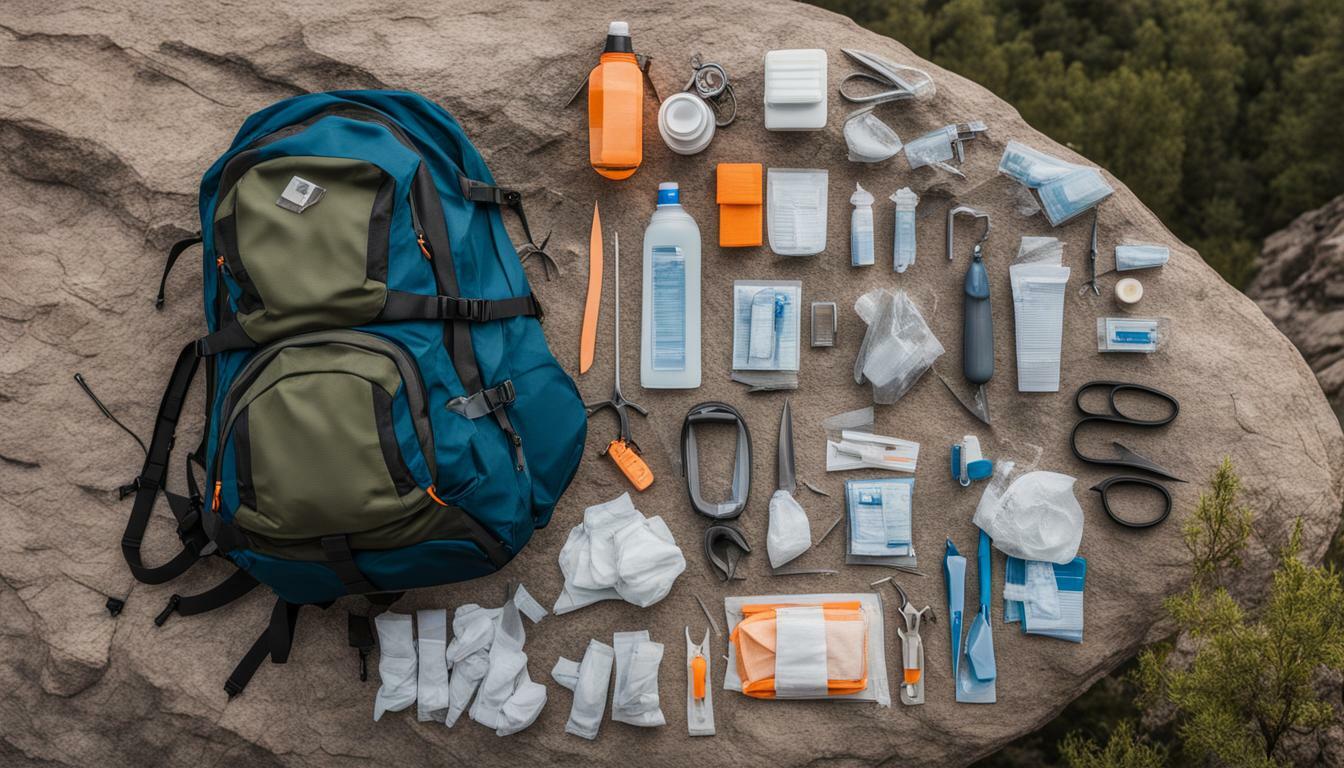
Stay Prepared: Fieldwork Health is Key
As a remote environmental scientist, staying prepared and equipped with the right supplies is essential for ensuring your well-being in harsh and unpredictable environments. First aid kits specifically designed for fieldwork can make a significant difference in addressing common health concerns that arise during remote fieldwork.
Whether you’re conducting research in remote locations across the UK or travelling abroad, having the appropriate first aid kit is crucial. It’s important to consider factors such as the duration of fieldwork, the number of scientists involved, and the specific risks and health concerns in the chosen location when selecting the right kit.
Fieldwork health should also include proper training in basic first aid techniques. Being trained in first aid can contribute to quicker response times and better overall safety during fieldwork. It’s recommended to regularly check expiration dates, replenish supplies, and keep track of inventory to ensure that first aid kits remain fully functional and ready for use.
Real-life examples have shown that first aid kits can play a crucial role in ensuring the well-being of scientists during remote fieldwork. Experienced environmental scientists also provide valuable recommendations and practical tips based on their own experiences and expertise.
Overall, prioritizing fieldwork health and safety is key to ensuring the well-being and success of remote environmental scientists. Stay prepared with the appropriate first aid kit and proper training to tackle the unique challenges and risks of fieldwork in remote environments.
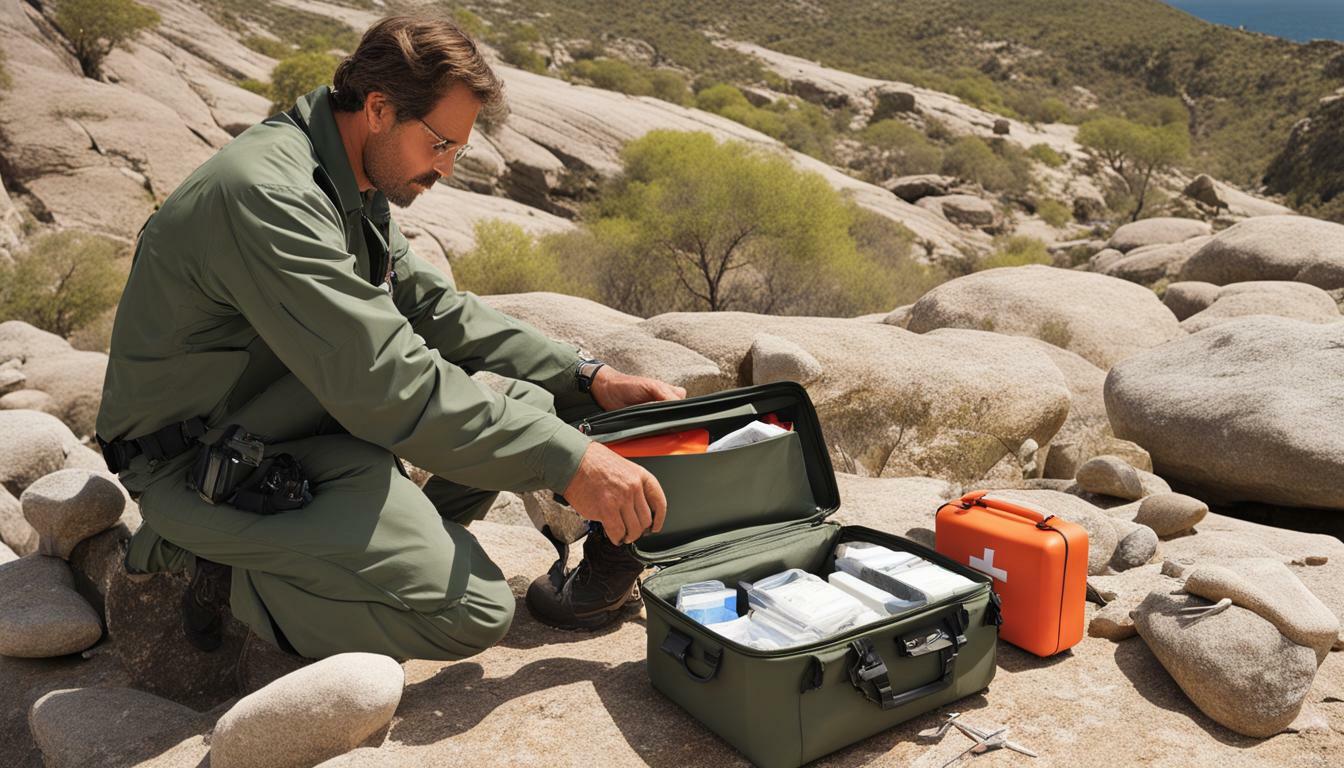
Conclusion: Ensuring Fieldwork Health for Remote Environmental Scientists
In conclusion, the well-being of environmental scientists during remote fieldwork is essential. It is crucial to stay prepared for any potential health concerns that may arise in harsh and challenging environments.
Specialized first aid kits for fieldwork play a significant role in ensuring the safety of scientists, and it is essential to choose the right one depending on the location, duration, and number of individuals involved. Additionally, regular training in basic first aid techniques can contribute to better response times and overall fieldwork safety.
Proper maintenance and restocking of first aid kits are also crucial to ensure they remain fully functional and ready for use. By keeping track of inventory and checking expiration dates, scientists can stay prepared for any emergency situation that may occur.
Real-life examples and recommendations from experienced environmental scientists further highlight the significance of staying prepared for fieldwork health and safety. By prioritizing their well-being and following recommended protocols and resources, remote environmental scientists can continue their important work with greater confidence and peace of mind.
Therefore, it is critical to prioritize fieldwork health and safety by having the appropriate first aid kits readily available, seeking necessary training, and staying prepared for the unique challenges of remote fieldwork. By taking these necessary precautions, scientists can ensure their safety and success in their valuable work.
